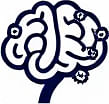The Impact of Status Quo Bias on Everyday Choices
 by Lilian Nienow
by Lilian Nienow
Status Quo Bias influences how people make decisions by favoring the familiar, often leading to missed opportunities. This bias appears in personal life, business, and learning, and recognizing it can improve cognitive growth and strategic thinking.

Status Quo Bias is a common cognitive pattern where individuals prefer existing conditions over change, even when alternatives might offer advantages. This tendency can affect various aspects of life, from daily routines to major decisions.
What Is Status Quo Bias?
In psychology, Status Quo Bias refers to the inclination to maintain the current state of affairs. It often stems from a natural resistance to alteration, which can stem from comfort or fear of the unknown. For instance, people might stick with the same job or habits, overlooking potential benefits of switching. This bias highlights how mental shortcuts can shape behavior without conscious awareness.
Origins in Human Behavior
This bias has roots in evolutionary psychology, where sticking to what works ensured survival. Over time, it has become a default response in decision-making processes. Research shows that people tend to overweight the risks of change while underestimating the costs of inaction. In cognitive development, such patterns can limit personal growth by reinforcing old ways of thinking. For example, learners might avoid new study methods, even if they could be more effective.
Effects in Professional Settings
In business, decision-making can be heavily influenced by this bias. Organizations might continue with outdated strategies simply because they are familiar, potentially hindering innovation. A company could ignore emerging market trends in favor of established practices, leading to stagnation. This shows how the bias operates at a group level, where consensus favors the status quo. Professionals in leadership roles often encounter this when evaluating new technologies or processes.
Real-World Examples
Consider how this bias plays out in everyday scenarios. Someone might keep using an inefficient tool at work because it's what they know, rather than adopting a better one. In personal finance, individuals could hold onto poor investments due to familiarity, missing out on growth opportunities. These examples illustrate the subtle ways the bias infiltrates choices, affecting outcomes in psychology and beyond.
Implications for Cognitive Development
On a broader scale, this cognitive pattern can impede learning and adaptability. It might prevent people from exploring new ideas or skills, as the effort required feels disproportionate to the perceived benefits. For lifelong learners, recognizing and addressing this bias is essential for progress. By challenging established routines, individuals can foster more flexible thinking and better problem-solving abilities.
Strategies to Counteract It
To mitigate the effects of this bias, one effective approach is to actively question assumptions. Start by listing pros and cons of maintaining the current situation versus making a change. This method encourages a more balanced evaluation. In professional contexts, teams can use structured reviews to assess decisions objectively. For instance, setting regular check-ins can help identify when sticking to the status quo is no longer beneficial.
Another way is through small experiments. Trying minor changes, like altering a daily routine, can build confidence in adapting. This practice supports cognitive development by promoting resilience and openness. Over time, these steps can lead to more informed choices and reduced reliance on habitual patterns.
Why It Matters
Understanding this bias is crucial for anyone interested in improving their mental frameworks. It affects psychology by influencing how we process information and make judgments. In business strategies, it can mean the difference between success and obsolescence. By applying awareness, individuals and organizations can achieve greater cognitive growth and adaptability.
In summary, this cognitive pattern is a fundamental part of human behavior that warrants attention. Recognizing its presence allows for more deliberate and effective decision-making, ultimately leading to personal and professional advancement.
